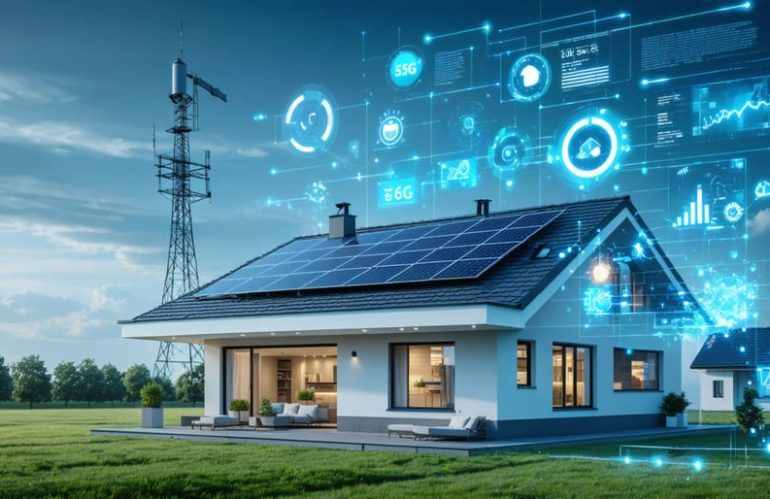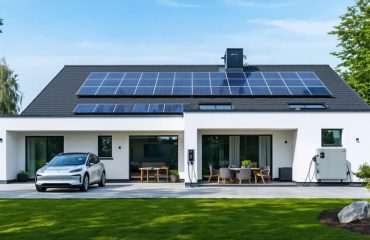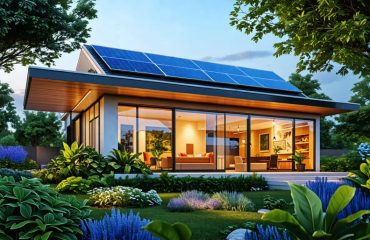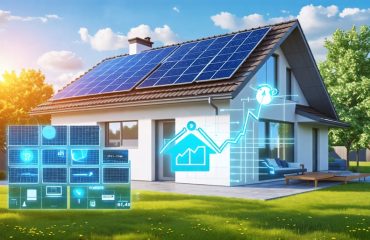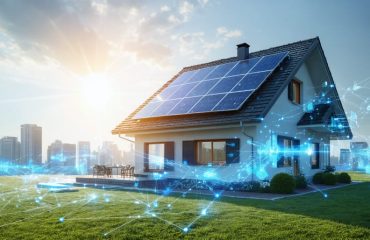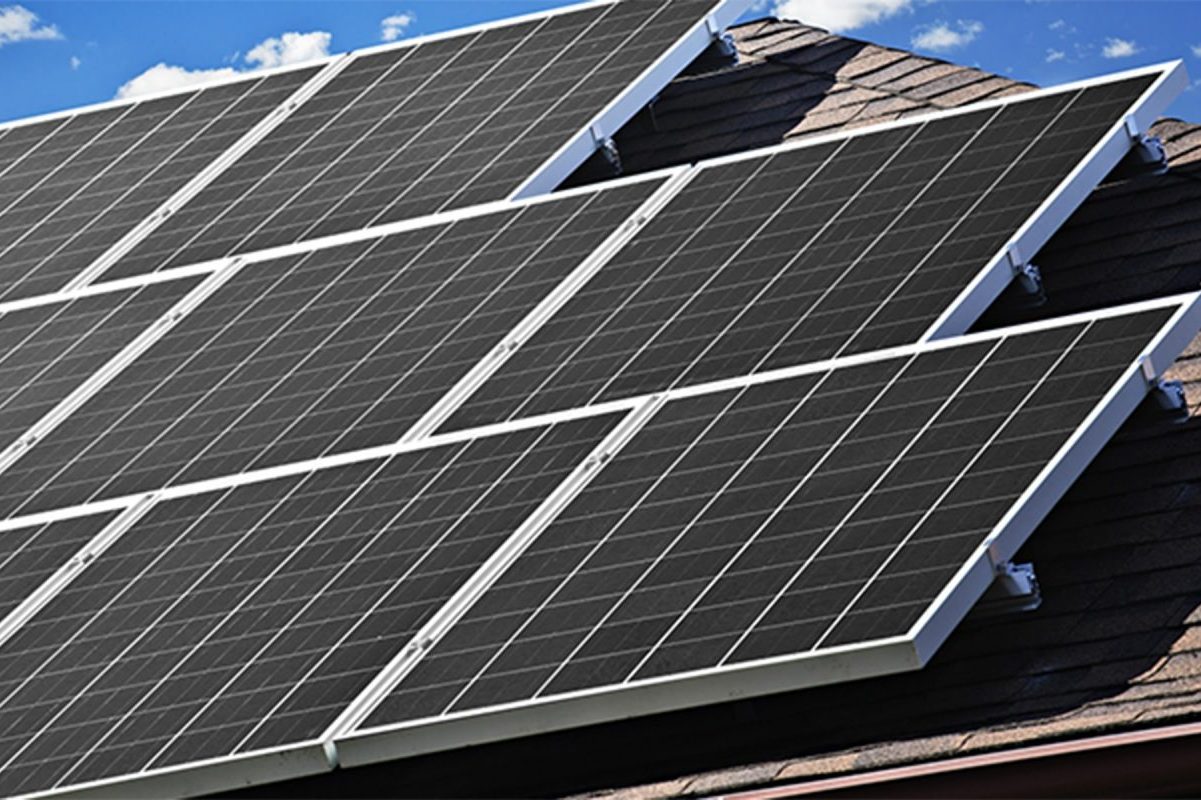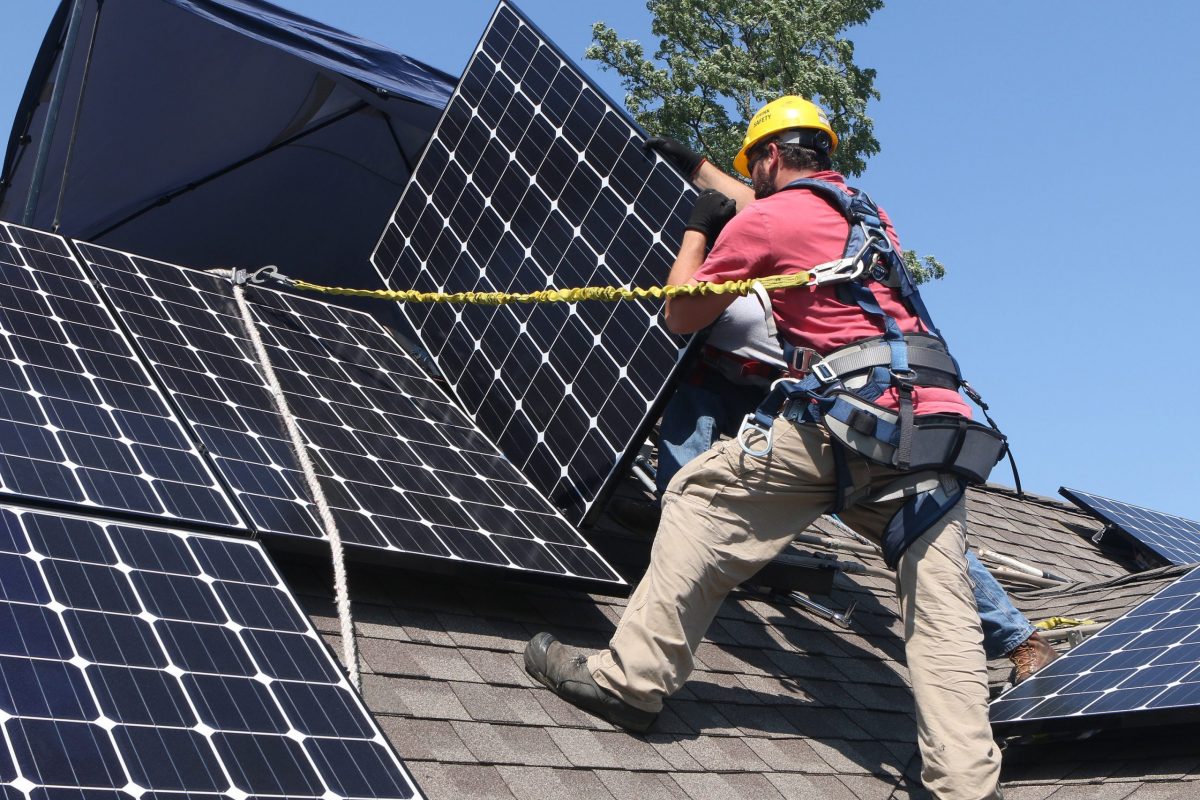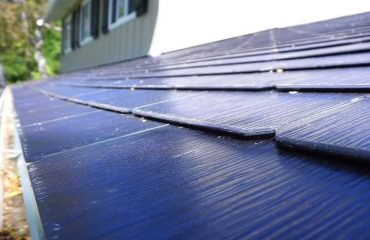5G edge computing is revolutionizing how homeowners harness and manage solar energy, bringing unprecedented speed and efficiency to renewable power systems. By processing data closer to where it’s generated – right at your solar installation – rather than sending it to distant servers, 5G edge computing enables real-time monitoring and instant system adjustments that maximize energy production.
This game-changing technology reduces response times from seconds to milliseconds, allowing your solar system to react instantly to changing weather conditions, energy demands, and grid requirements. For homeowners, this means smarter energy management, lower electricity bills, and more reliable renewable power generation. The combination of 5G’s ultra-low latency with edge computing’s local processing power creates a responsive, intelligent solar ecosystem that adapts to your home’s unique energy needs.
As we move toward a more sustainable future, 5G edge computing stands at the forefront of making solar energy more efficient, accessible, and practical for everyday homeowners – transforming the way we generate, consume, and manage clean energy.
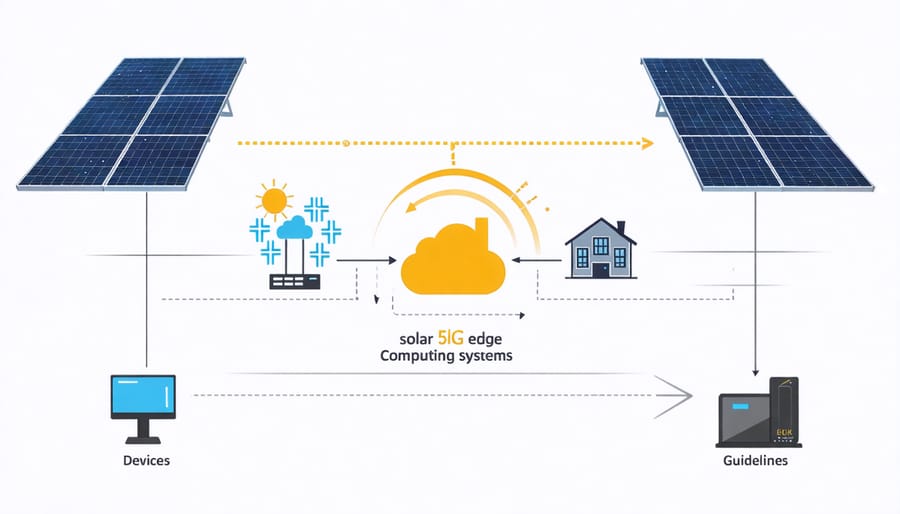
How 5G Edge Computing Supercharges Your Solar System
Real-Time Power Management
5G edge computing revolutionizes power management by enabling real-time monitoring and instant adjustments to your energy systems. Instead of waiting for data to travel to distant servers, edge computing processes information right where it’s generated – at your home or business. This means your smart energy systems can respond to changes in power consumption patterns within milliseconds.
Imagine your home automatically adjusting power distribution based on immediate needs: dimming lights in empty rooms, optimizing HVAC systems based on occupancy, or managing electric vehicle charging during off-peak hours. These adjustments happen instantly, without any noticeable delay.
The system continuously analyzes energy usage patterns and environmental conditions, making micro-adjustments that add up to significant energy savings. For example, when solar panel output fluctuates due to passing clouds, edge computing enables immediate power source switching to maintain optimal efficiency.
This real-time capability also helps prevent energy waste and reduces strain on the power grid during peak usage times, resulting in lower utility bills and a more sustainable energy footprint.
Reduced Energy Waste
5G edge computing significantly reduces energy waste by minimizing the distance data needs to travel and processing information closer to its source. Instead of sending data to distant servers, edge computing processes it locally, cutting response times from seconds to milliseconds. This faster processing means less energy is consumed in data transmission and storage.
For homeowners and businesses, this translates to tangible benefits. Smart devices and appliances can respond more quickly and efficiently, reducing standby power consumption. Think of it like having a personal assistant right next to you versus one working from another city – the nearby helper can respond faster and use fewer resources to get things done.
The reduced latency also means less data needs to be repeatedly transmitted, which further decreases energy consumption. In practical terms, this could mean your smart thermostat adjusts more precisely, your security cameras process footage more efficiently, and your energy management systems operate with greater accuracy. Studies suggest that edge computing can reduce energy consumption by up to 25% compared to traditional cloud computing methods, making it a valuable tool in the quest for sustainable living.
Smart Features That Save You Money
Automated Grid Optimization
The integration of 5G edge computing with solar systems brings a new level of intelligence to home energy management. Through advanced smart grid technology, your solar setup constantly analyzes weather patterns, energy consumption habits, and grid conditions to optimize power generation and usage in real-time.
This automated system works like a skilled energy manager, making split-second decisions to maximize your solar production. When sunshine is abundant, it ensures your panels operate at peak efficiency. During cloudy periods, it adjusts your home’s energy consumption to minimize reliance on grid power. The system even predicts weather changes and adjusts accordingly, storing extra energy in batteries when storms are approaching.
What makes this particularly effective is the minimal latency of 5G connectivity. Your system can respond to changes instantly, whether it’s redirecting excess power to charge your electric vehicle or reducing consumption during peak grid prices. This means you’re always getting the most from your solar investment while keeping your utility bills as low as possible.
The system also learns from your daily routines, automatically adjusting power distribution based on when you typically need more energy. For example, it might prioritize battery charging during sunny morning hours if it knows you tend to use more power in the evening.
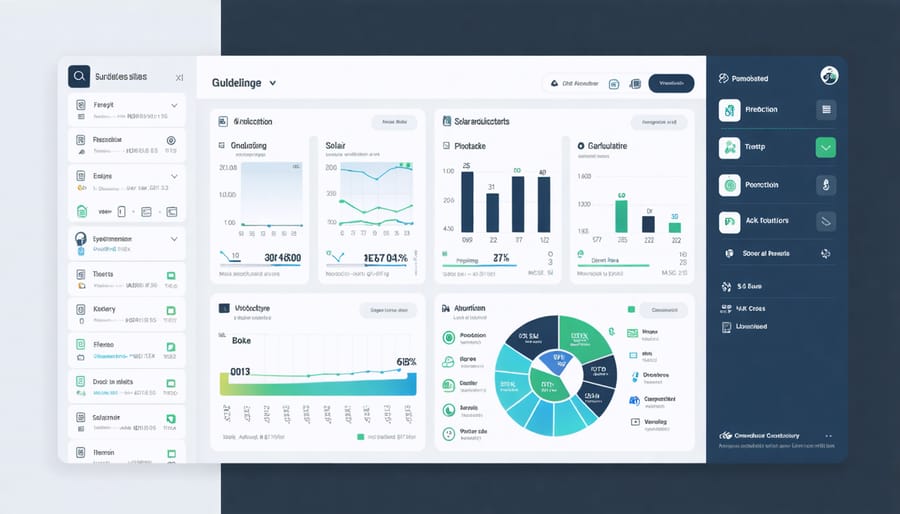
Weather-Smart Adjustments
One of the most impressive features of 5G edge computing in solar systems is its ability to make real-time adjustments based on weather conditions. This advanced technology uses local weather data and predictive analytics for solar production to optimize your system’s performance throughout the day.
When storm clouds approach, the system can automatically adjust panel angles to capture maximum available light. During periods of intense heat, it can modify power distribution to prevent system strain and maintain optimal efficiency. This weather-smart capability means your solar setup isn’t just reacting to conditions – it’s staying one step ahead.
The real magic happens in milliseconds, thanks to 5G’s ultra-low latency. Weather sensors communicate instantly with your system’s control hub, allowing for immediate responses to changing conditions. Whether it’s adjusting for morning dew, compensating for snow coverage, or preparing for incoming rain, these smart adjustments happen seamlessly without any input needed from you.
This weather-adaptive technology also helps protect your investment. By responding to severe weather conditions, the system can automatically enter safe mode during extreme events, helping prevent potential damage and extending the life of your solar equipment. For homeowners, this means greater peace of mind and more consistent energy production, regardless of what Mother Nature has in store.
Setting Up 5G Edge Computing for Your Solar System

Compatible Equipment
To fully leverage 5G edge computing for your home energy system, you’ll need certain compatible equipment and potentially some upgrades to your existing setup. The foundation starts with a modern solar monitoring system that supports wireless connectivity and real-time data processing.
Essential components include 5G-enabled smart meters, which can communicate instantaneously with your energy management system. These meters typically feature built-in edge computing capabilities and can process data locally before sending relevant information to the cloud.
You’ll also need a compatible smart inverter with advanced communication protocols. Modern hybrid inverters are increasingly coming equipped with 5G connectivity options, making them ideal for edge computing applications. Look for models that support standard protocols like SunSpec or IEEE 2030.5.
For optimal performance, consider installing:
– 5G-compatible gateway devices
– Smart energy storage systems with built-in computing capabilities
– Advanced home energy management systems (HEMS)
– IoT sensors for environmental monitoring
– Edge servers or micro data centers for local processing
Most newer solar installations already include many of these components, but older systems may require upgrades. When selecting new equipment, verify that it’s certified for 5G compatibility and supports the latest security protocols. Many manufacturers now offer upgrade kits that can bring existing systems up to speed without requiring a complete overhaul.
Installation Process
Setting up 5G edge computing for your home energy system is simpler than you might think. The process typically begins with a consultation from a certified installer who will assess your current setup and recommend the best configuration for your needs.
The first step involves installing the edge computing gateway, which serves as the brain of your system. This compact device is usually mounted near your existing internet router or in your utility room. Your installer will connect it to your home network and ensure it has a stable power supply.
Next comes the integration of smart sensors throughout your home. These small, wireless devices are placed strategically to monitor energy usage, temperature, and system performance. They communicate directly with the edge gateway, requiring minimal setup beyond initial activation.
The final phase involves connecting your system to the local 5G network. Your installer will work with your service provider to establish this connection and verify signal strength. They’ll also set up the user interface on your smartphone or tablet, allowing you to monitor and control your system remotely.
Most installations can be completed within a day, and your installer will provide a thorough demonstration of the system’s features. They’ll also share maintenance tips and ensure you’re comfortable managing basic functions before leaving. Regular software updates happen automatically, keeping your system optimized without requiring your intervention.
As we’ve explored throughout this article, 5G edge computing represents a transformative leap forward in how we process and utilize data in our connected world. By bringing computing power closer to where data is generated, this technology dramatically reduces latency, enhances security, and enables real-time processing that wasn’t possible before.
The benefits for homeowners and businesses are clear: smarter home automation, more responsive security systems, and seamless integration of smart devices. For environmentally conscious individuals, 5G edge computing supports more efficient energy management and helps optimize renewable energy systems, contributing to a greener future.
The time to embrace this technology is now. As 5G networks continue to expand and edge computing becomes more accessible, early adopters will be well-positioned to take advantage of its benefits. Whether you’re looking to enhance your home’s efficiency, reduce energy costs, or simply stay ahead of the technological curve, implementing 5G edge computing solutions can help you achieve these goals.
Remember that you don’t need to be a tech expert to benefit from this technology. Many plug-and-play solutions are already available, and service providers are making implementation increasingly user-friendly. Start small by identifying one or two areas where edge computing could benefit your home or business, then gradually expand as you become more comfortable with the technology.
By taking action today, you’ll be part of the growing movement toward smarter, more efficient, and more sustainable living. The future of computing is at the edge – and it’s more accessible than ever before.

